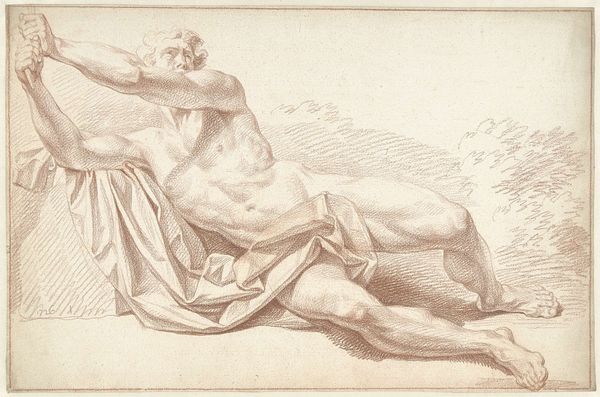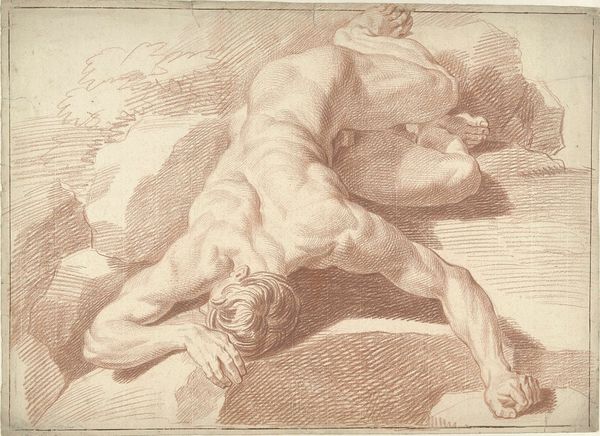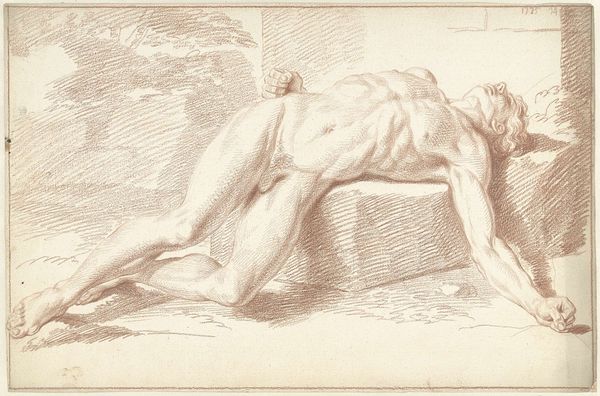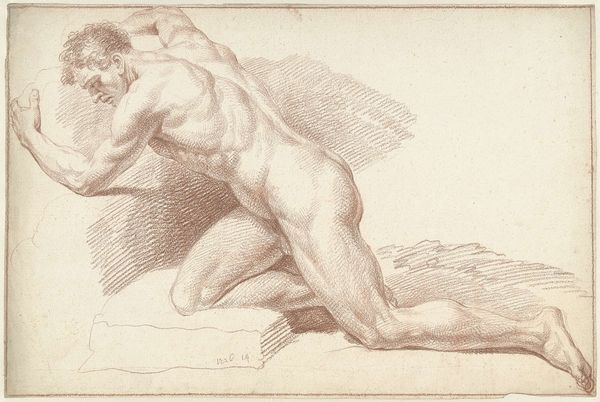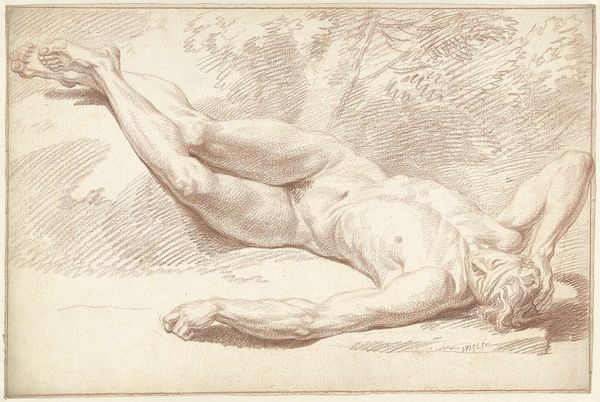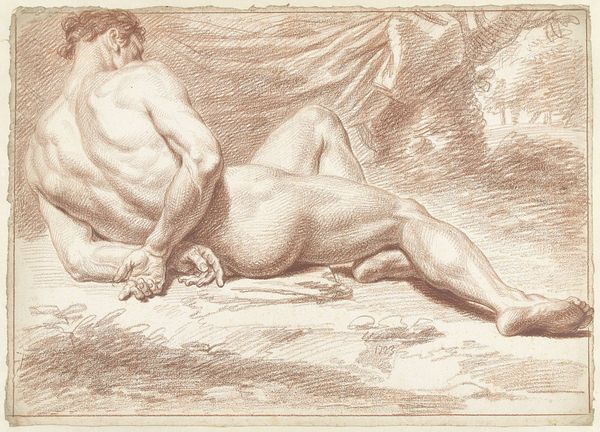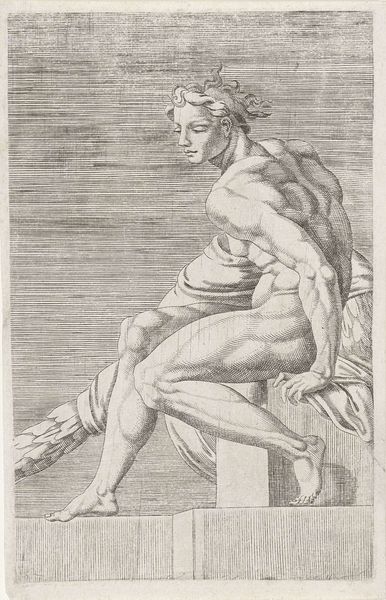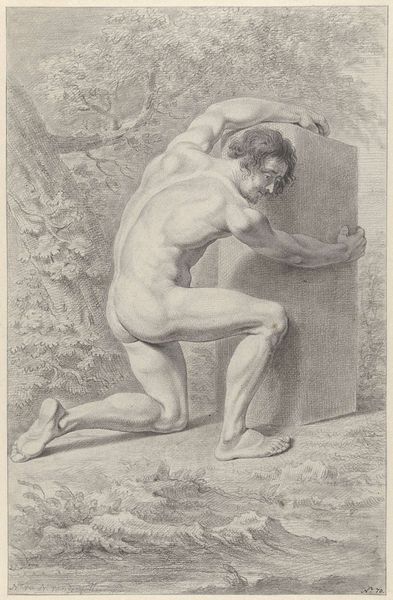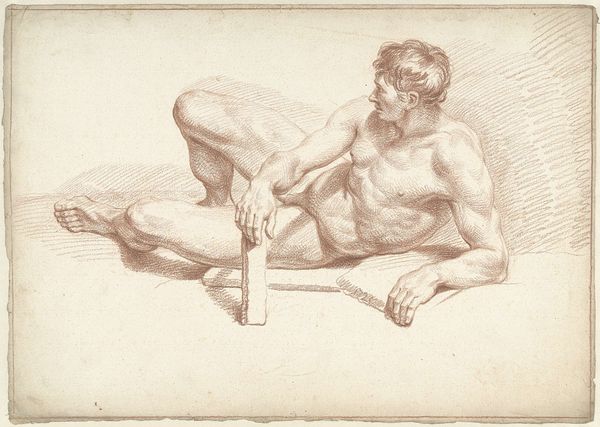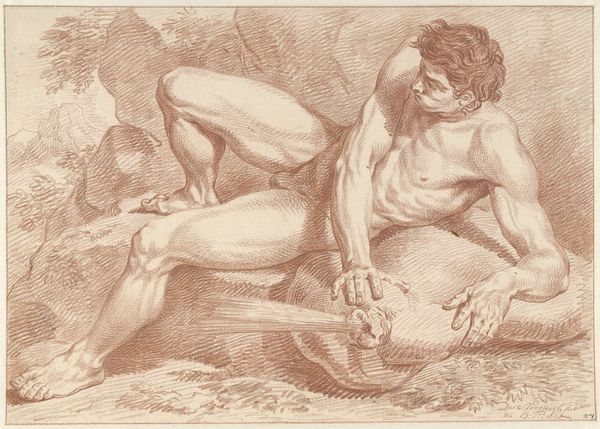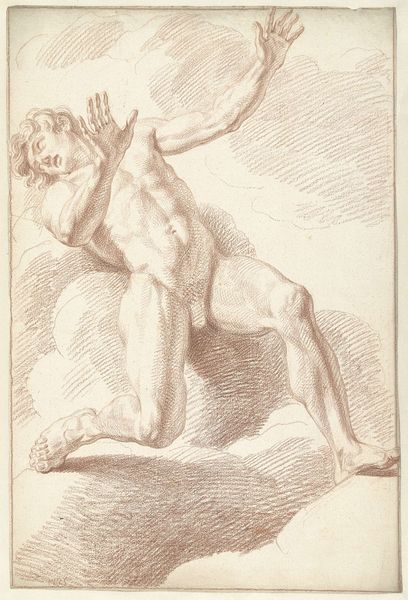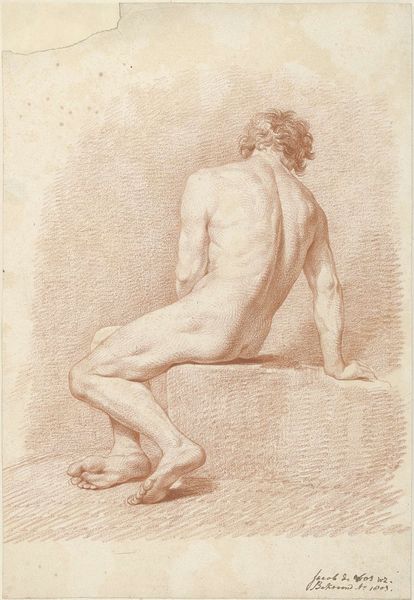
Mannelijk naakt, liggend op de zij, steunend op de linkerarm 1737
0:00
0:00
drawing, dry-media
#
drawing
#
11_renaissance
#
dry-media
#
portrait reference
#
portrait drawing
#
history-painting
#
academic-art
#
nude
Dimensions: height 258 mm, width 445 mm
Copyright: Rijks Museum: Open Domain
Editor: Here we have Louis Fabritius Dubourg's "Male Nude, Lying on His Side, Resting on His Left Arm" from 1737, rendered in drawing. The subject matter feels very classical. What jumps out at you about this work? Curator: Well, first, it’s important to contextualize its role in the art world. This wasn't intended for public display in the same way as a finished painting. The artist most likely made it as an academic study, used as reference for history paintings or grand mythological scenes. Consider the socio-political implications of representing the male nude at this time; who was commissioning this work and what power did it reflect? Editor: So it’s more like a preparatory study meant for other paintings? That's so interesting! What purpose would this piece fill in Academic Art? Curator: Precisely. It was about mastering form, proportion, and the idealization of the human figure, based on the dominant artistic theories of the academies. Academic art often served the interests of the elite. The perfection in the depiction of human anatomy was very symbolic of social class. Does anything else strike you? Editor: Now that I consider your explanation, the positioning of the man also carries power – looking up as though he is viewing inferiors, for example. Curator: Good observation. Its display within the museum setting impacts the experience. By putting the sketch on the walls, don't you think that shifts its purpose, giving value to what was an instructional reference? Editor: Definitely. It makes you consider the original use as only a piece to creating a final picture, not a finished one itself. I see how our modern museums have changed its reception and place in history. Curator: It's through questioning those shifts in context and audience that we truly understand a piece like this. It allows us to ask not just about what's on display, but *why* it’s on display.
Comments
No comments
Be the first to comment and join the conversation on the ultimate creative platform.
